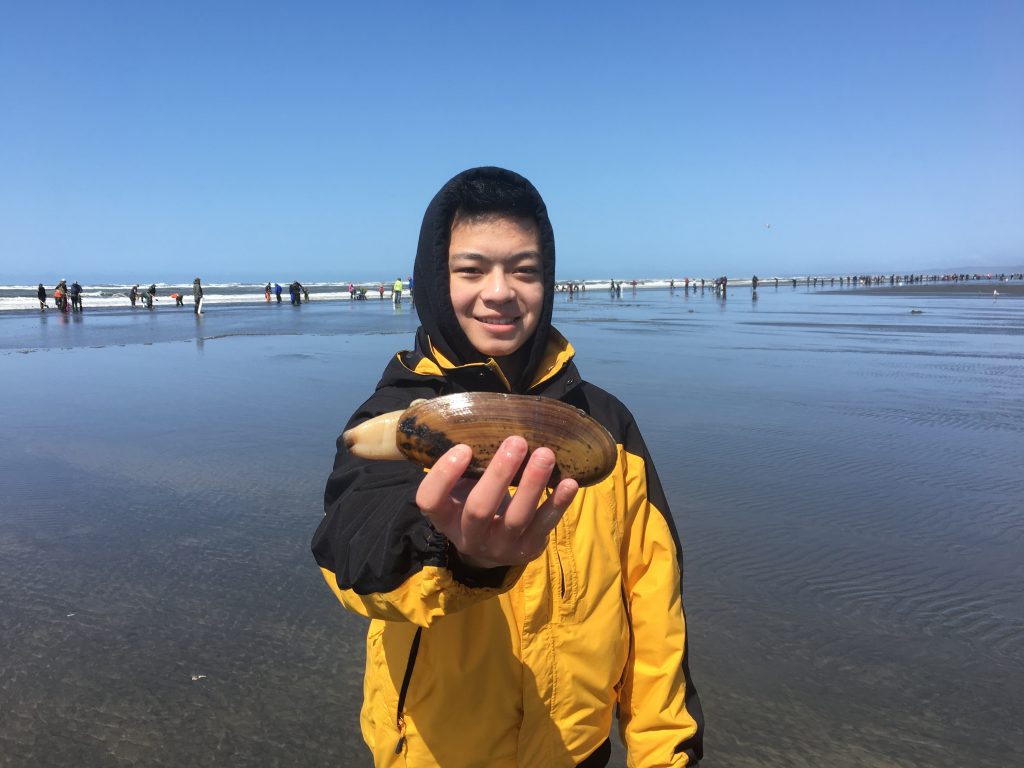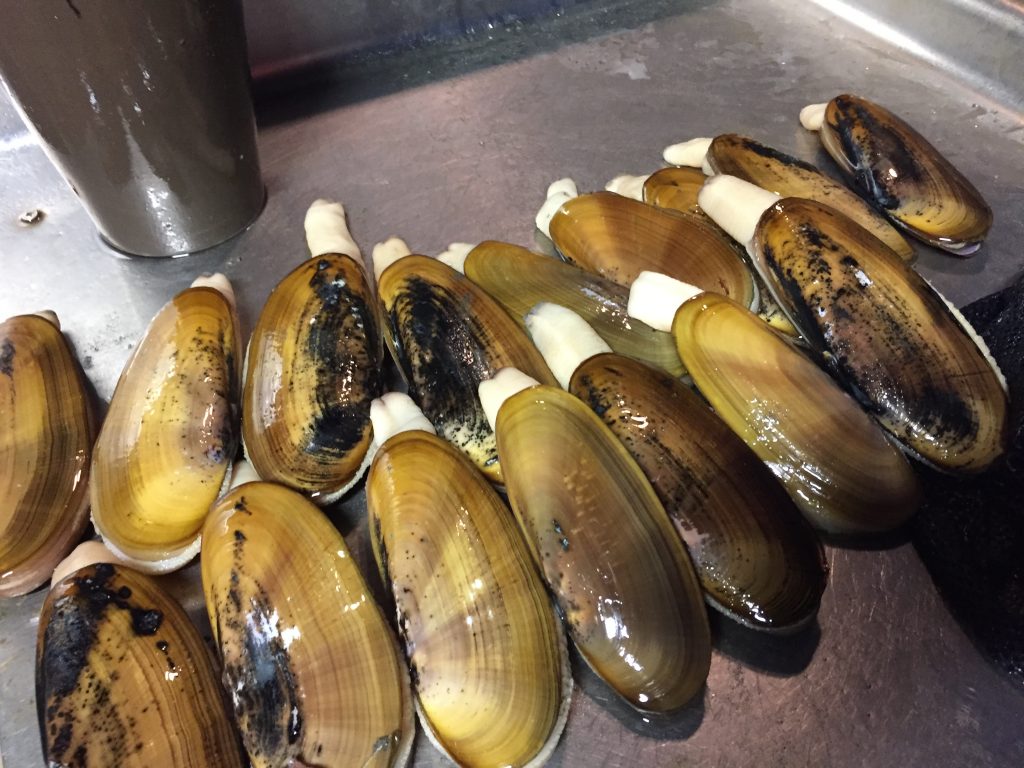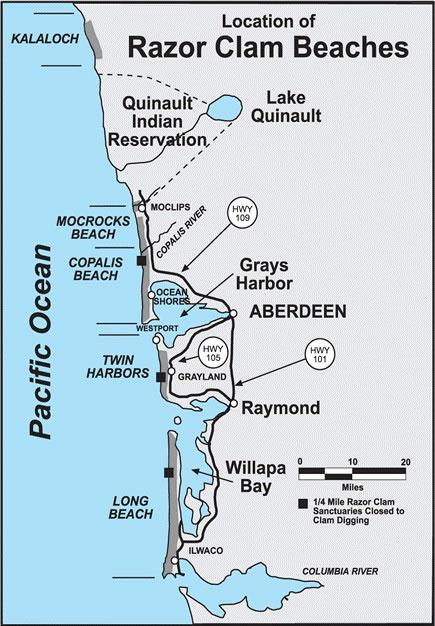Dig this great news! Coastal razor clam digs begin Wednesday to Saturday in what is expected to be an excellent 2020-2021 season Leave a reply

By Mark Yuasa
Coastal razor clam enthusiasts will dig this uplifting news!
WDFW today approved the initial 39 digging dates for the 2020-2021 razor clam season that begins this Wednesday (Sept. 14) through Saturday (Sept. 19) during morning low tides.
Digging will be open Wednesday (minus-1.0 feet at 6:17 a.m.) at Long Beach, Twin Harbors and Copalis; Thursday (-1.0 at 6:58 a.m.) at Long Beach, Twin Harbors and Mocrocks; Friday (-0.8 at 7:39 a.m.) at Long Beach, Twin Harbors and Copalis; and Saturday (-0.3 at 8:19 a.m.) at Long Beach, Twin Harbors and Mocrocks. No digging is allowed after 12 p.m. on each day.
Evening digs after 12 p.m. will be open on Sunday, Sept. 20 (0.8 at 9:43 p.m.) at Long Beach, Twin Harbors and Copalis; Monday, Sept. 21 (0.8 at 10:37 p.m.) at Long Beach, Twin Harbors and Mocrocks; and Tuesday, Sept. 22 (0.3 feet at 11:37 p.m.) at Long Beach, Twin Harbors and Copalis.
The remaining tentative dates during evening low tides are: Oct. 17, 19 and 21; Nov. 2, 14, 16 and 18; Dec. 1, 3, 13, 15, 17, 28 and 30 at Long Beach, Twin Harbors and Copalis, and Oct. 16, 18, 20 and 31; Nov. 1, 3, 13, 15, 17 and 19; Dec. 2, 4, 12, 14, 16, 18, 29 and 31 at Long Beach, Twin Harbors and Mocrocks. No digging is allowed before 12 p.m. during digs that occur in the afternoons or evenings.

Final approval of all dates above depends on marine toxin testing and are usually announced one to two weeks prior to each series of digs. Digging is also contingent upon continued guidance by public health officials monitoring COVID-19 in coastal communities. For WDFW COVID-19 updates, go to https://wdfw.wa.gov/about/covid-19-updates.
Summer assessments just completed in late August showed excellent razor clam populations.
Long Beach has 24.8-million recruit-size razor clams and a total allowable catch (TAC) of 9.9-million for the 2020-2021 season, which is up from 5.2-million in 2019-2020. Potentially there could be 220 days of digging at Long Beach, but there aren’t 220 low tides in the entire 2020-2021 season.
At Twin Harbors just south of Westport, assessments showed 5.2-million recruit size clams with a TAC of 2.1-million compared to 1.8-million last season. WDFW indicates 104 days of digging could be offered at Twin Harbors compared to 63 days last season.
At Copalis, the recruit size clam total is 11.8-million with a TAC of 4.7-million (recreational harvesters are allowed a share of 2.37-million) up from 4.2-million in 2019-2020. At Copalis, there is the potential to offer 55 days of digging in 2020-2021 season.

At Mocrocks there are 11.6-million recruit-size razor clams with a TAC of 4.6-million (recreational harvesters are allowed a share of 2.37-million) up from 3.3-million last season. Under the shared catch, WDFW could offer up to 90 days of digging.
Kalaloch was closed during 2019-2020 due to a low abundance of clams, but recent assessments showed a slight uptick. In 2019-2020, it was 0.4-million and for 2020-2021 it is 0.7-million although Ayres noted almost no clams were over 3 inches long.
WDFW is also keeps close tabs on marine toxins such as domoic acid – a natural toxin produced by certain types of marine algae – which can be harmful or even fatal if consumed in enough quantities.
The latest samples from the DOH labs showed domoic acid levels remained well under the 20 parts-per-million (ppm) cutoff. At Twin Harbors it was 5ppm; Quinault Reservation, 2ppm; Mocrocks, 2ppm; Copalis, 4ppm; and Long Beach, 5ppm.
For more on razor clams, go to http://wdfw.wa.gov/fishing/shellfish/razorclams/.

